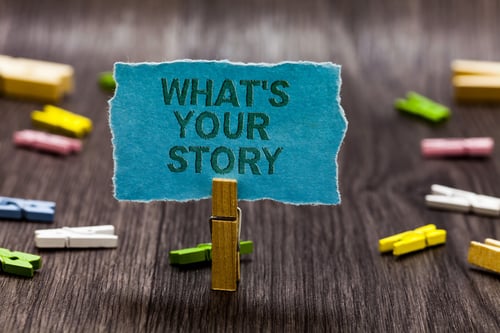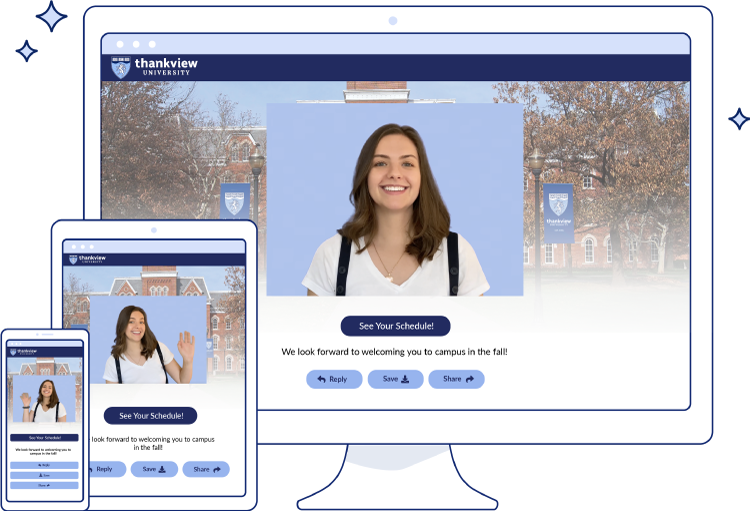How To Craft a Successful Donation Request
Nonprofit organizations rely on donations to survive and grow. According to Giving USA, “American individuals, bequests, foundations, and corporations gave an estimated $449.64 billion to U.S. charities in 2019, placing it among the highest years ever for charitable giving.” That’s a lot of money changing hands to go toward a lot of good causes.
To receive these funds, charitable organizations need to send donation requests that resonate with their donors. You and your team build relationships with people all year long. Think about what makes them tick, what might make them tear up or become outraged enough to act. That’s the type of powerful information or story you need to include when you’re asking for donations.
What Is a Donation Request?
Simply put, a donation request is a way to formally and directly ask for funds. It’s the engine that drives your fundraising activities.
If you don’t ask, you probably won’t receive what you need. That’s where donation requests come in. A cornerstone of your year-round fundraising efforts should be asking past and potential donors to give. Many causes are competing for donors’ dollars and attention, so donation requests are a way to stay top-of-mind in a noisy world.
Your entire team should feel equipped to send donation requests. Train your board of directors to send outreach letters or hold one-on-one meetings on behalf of your nonprofit. Make sure your executive director has the resources they need to make successful pitches to businesses, groups, and high net worth donors. And then of course, your development director and fundraising staff should constantly be generating fresh angles to use in donation requests.
How To Create a Good Donation Request
Make it easy. Send people an online donation request via email or social media. When reaching out in person, be ready to accept checks and bring materials to leave behind in case they aren’t ready to commit on the spot. With snail mail, include a return envelope and mail-in donation form. Regardless of your outreach method, it should be crystal clear to the donor how to move forward.
Make it official. On your donation request form, be sure the organization name is prominent and use letterhead and other brand elements. Whether online or by direct mail, you want it to be evident that you’re an established organization, not spam. Practice good stewardship with a tax compliant receipt that includes your tax ID and anything your donors need to report their donation to the IRS.
Make it personal. Incorporate the topics they care about. Reference past interactions wherever possible. (This is where a powerful CRM or tracking system comes in handy!) Consider using ThankView videos to raise awareness, promote events like Giving Tuesday, update supporters, and thank those who matter the most.
Who To Target With Your Donation Request

In terms of the sustainability of your philanthropic efforts, it makes sense to vary your outreach to multiple audiences. But of course, different approaches will work for different types of people and institutions.
For corporate giving, appeal to their infrastructure. Go after sponsorships for fundraisers, in-kind donations, and matching gifts. It might be harder to get in the door with businesses, but their ability to write big checks is worth it. They might also be able to help you amplify your message to their large network of staff, supporters, and followers.
For high net worth individuals, make sure you’re building relationships with them all around the calendar year, but you might want to target your donation request around your year-end giving campaign. Customize your conversations around the specific causes they care about.
For the masses, your donation asks should focus on much smaller amounts. In this case, you’re going after a volume of requests, so it’s a numbers game. There are tools to make it easier — for example, Georgetown University was able to create 1,885 personalized donation impact videos in two hours using ThankView. This group of more everyday supporters might also do well with a fundraising event model, which can include opportunities for raffles, cash donations, and peer-to-peer giving.
What To Say in a Successful Donation Request
Just because you ask doesn’t mean people will be ready to cut you a check. In your donation request, be sure to address any objections or FAQs. Tell them where exactly the money will be going, including the specific programs it will support. You might say something like, “With your support, our after-school program will provide snacks and mentorship to 200 local youth.”
Be clear on how much of the amount is tax deductible. Stay transparent about your fundraising goals so that they feel like they’re part of your journey to achieve them. If you’re hosting a meet-up, make sure the event date and location are easy to see.
Benevolence is certainly a motivating factor, but show your donors how they’ll benefit from the exchange as well. Maybe you’re able to offer individuals gift cards, branded merchandise, or the chance to win a high-value prize.
For companies, explain how they’ll receive positive publicity or public thanks for their donation. You can also show them how your audiences align. For example, if the people who care about your cause are similar to the customers they’re targeting, include estimated reach from past initiatives. Brainstorm ideas for how to incorporate advertising with your corporate or small business partners.
Sell Your Cause Using Stories

Storytelling is one of the best, most persuasive ways to connect with your donor base. On one hand, you can show the dire situation you’re addressing with your services. Essentially, you’re saying that without your donors’ monetary support, people, animals, or the planet will continue to suffer.
On the other hand, share some key successes that have come from your nonprofit’s intervention. In this way, you’re encouraging donors to be part of something bigger than themselves, enabling them to have an impact simply by giving a donation.
Throughout the year, collect stories in a database — whether it’s a shared document, a folder, or anything else that your team can refer back to regularly. Check the story bank each time you sit down to write an appeal letter, host a fundraising event, or meet with a key donor.
Ask yourself: “Which story will resonate best with this person or audience?” Consider the last time you shared a similar story. Is it too soon to mention again? Did it perform really well last time, so it’s worth attempting again? This process can be as formal or casual as you’d like. If you have analytics in place, review the data over the past few months and years to see if any trends arise.
If you don’t have data at your disposal, do a qualitative analysis based on conversations you’ve had with donors and the feedback team members have received. Don’t discount anyone — ask people who have contact with donors in the field, including key volunteers, office staff who answer phones or process donations, and of course, your development team.
No matter the story you land on, be as compelling as possible. Use images and videos to visually show need or impact. Share testimonials and interviews, either as written letters and social media posts, or as recordings.
These first-hand accounts from beneficiaries, staff, volunteers, or even prominent donors can pull at people’s heartstrings and make them open their wallets. Whether it’s for hunger relief or local schools, international or within the United States, stories help your potential supporters put a “face” to your cause.
Start Sending
The wellness of your nonprofit organization depends on your ability to convince donors to give. It’s not an easy task, but once you find a donation request that works, iterate from there.
Accompany your donation request with a personalized video that automatically includes the donor’s name. You want your donors to feel special. The ThankView video platform makes it easy to engage your audience as you raise awareness and funds. Sign up for a demo to see how to amp up a simple donation request into a successful one.
